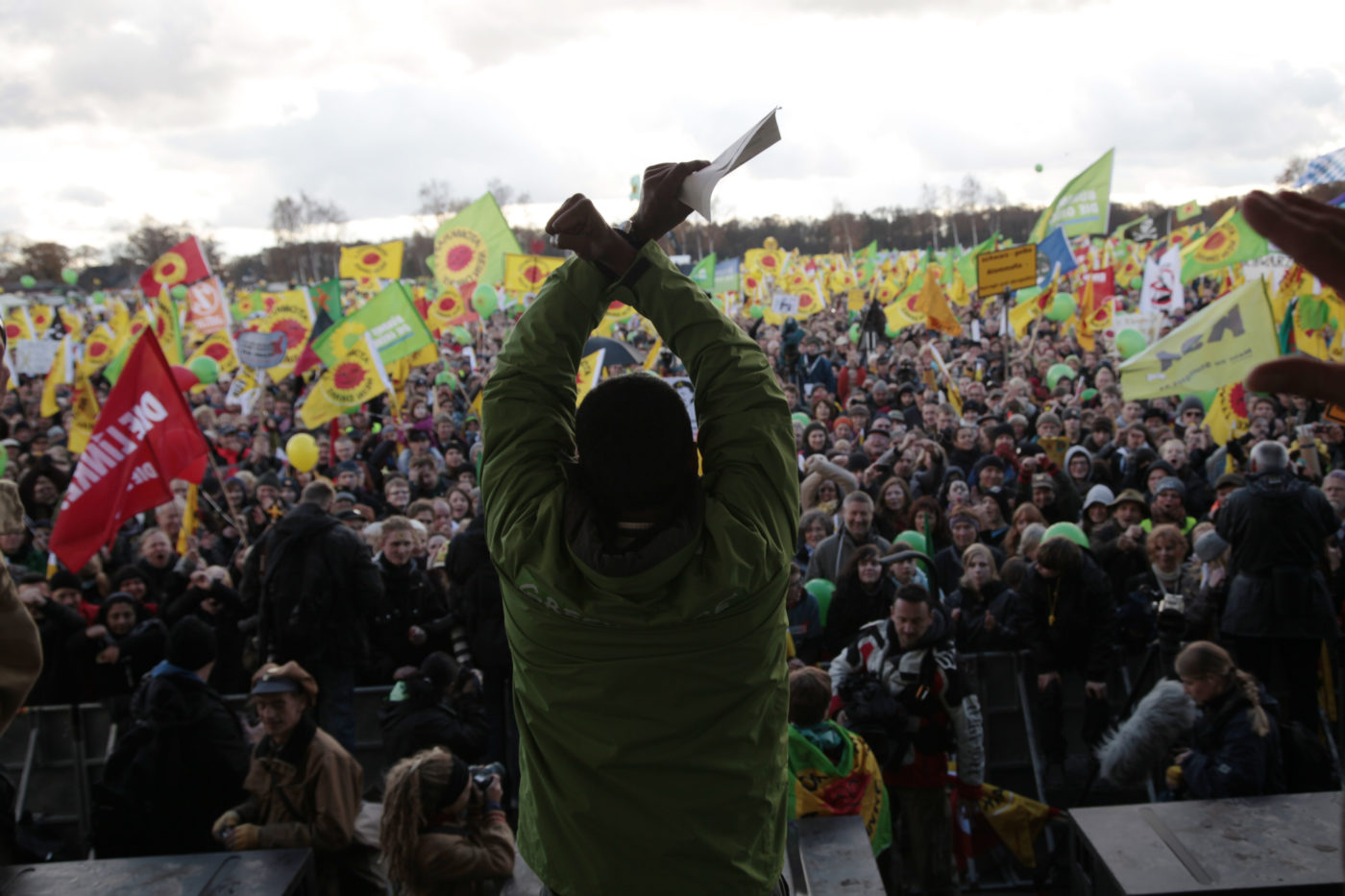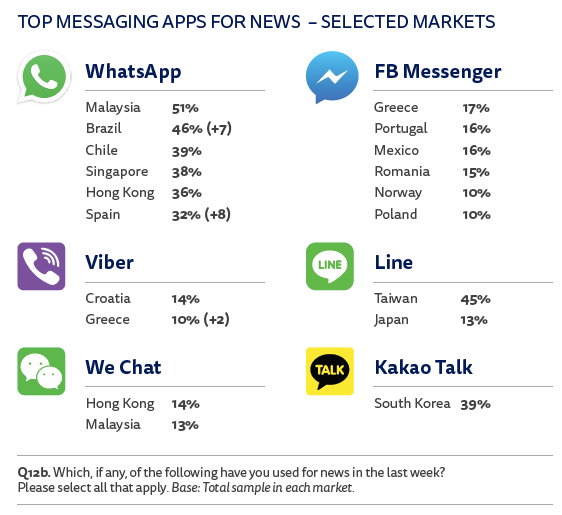As campaigners, our work is consumed by daily deadlines, planning, calls and emails. It’s a challenge to keep up with the trends driving changes in how we practice and use communications, organising and technology. It’s even more difficult to adapt new tools and tactics in our work. Meanwhile, we and our colleagues are campaigning in more polarised societies and high-surveillance environments. Our ability to create change is at risk.
That’s why we invited our peers and colleagues around the world to share their views and help uncover trends that could have the greatest impact on our collective abilities to drive change in 2018.
Overall, the patterns and solutions we’re seeing and hearing about point towards the value of greater personal connection. Decentralised campaigns empower people to organise their own communities. Facebook claims to be prioritising personal connections and trusted stories from friends. Bots and peer-to-peer text messaging are connecting people to one another instead of relying on broadcast messages from NGOs to huge audiences.
Our aim with this list is not only to highlight key trends but also to showcase the most creative and effective examples that we can all learn from to stay ahead, build people power and win at the scale needed to in today’s world.
1. Robot campaigners are leading new recruitment tactics

Using bots to influence people, particularly as a way of swaying public opinion, was a top story of 2017 (the role of bots in undermining democracy, for example).
But aren’t bots simply computer programs that automate information or action based on user input? What matters is how bots are used. They can simulate conversations or perform simple tasks. Chatbots are proving useful for campaigners because they can initiate conversations, tell stories, answer questions and collect information from communities and supporters. We’re seeing more campaigners putting bots to work for social good.
During last year’s U.K. general election, campaigners Yara Rodrigues Fowler and Charlotte Goodmanwere eager to mobilise the youth vote by highlighting policies that would help young people and challenge right-wing candidates. They decided to experiment with Tinder and created a chatbot that ran on donated profiles. The Tinder bot accelerated matches between 18-25 year-olds in constituencies where the race was close. When matched, the bot would initiate conversations and respond from an adaptable script.
What began as simple interactions initiated by the chatbot could be picked up and continued by Tinder users. Organisers with smartphones were connecting to new voters. They had reports of volunteers spending hours in conversations with people hundreds of miles away about party policies.
When Charity:Water wanted to create awareness and empathy with people in Ethiopia about their struggles with the water crisis they turned to bot technology. They created a Facebook messenger botcalled “Walk with Yeshi.” The bot introduces people to a (fictional) girl named Yeshi who lives in rural Ethiopia and spends hours each day walking to find water. Once someone starts chatting with Yeshi, she asks and answers questions and sends images, videos, audio clips and maps about her journey.
Charity:Water wanted to create an experience that felt personal and intimate to make the crisis real for people. A bot lets the user ask questions and personalise the experience, maintaining conversations lasting over several hours.
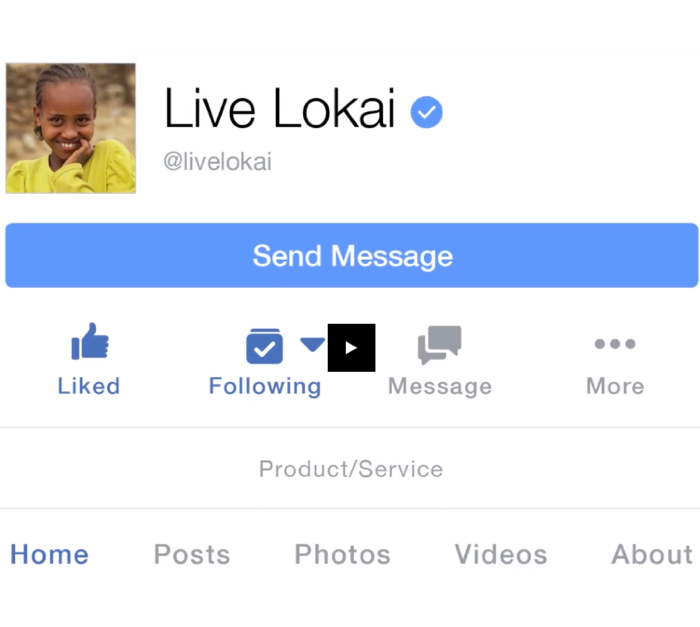
Charity:Water’s “Walk with Yeshi” chatbot
Bots are also helping humanitarian organisations provide direct services to people on the ground. Organisations are looking at how to use messaging bots to support refugees and people affected by natural disasters. A public health organization in Puerto Rico created a Zikabot in response to the Zika outbreak that lets Puerto Ricans ask anonymous questions about Zika and receive accurate and immediate health information. The fact that they can ask questions anonymously makes it easier for people to ask very personal or revealing questions.
Bots are also being used by environmental campaigners. HawaBadlo, an Indian organisation fighting air pollution created a Facebook messenger bot that updates people about the air quality in the their location and provides advice on how to switch to greener fuels. Climate Reality set up a Facebook messenger bot that helps people to start taking climate action and sends updates about what they can do.
Bots for social good are helping campaigners on the front lines of health, humanitarian, political and social justice campaigns around the world, and this trend is likely to increase as more of our online interaction becomes automated. Comscore predicts that within two years 50% of all online searches will use voice. This could have a huge impact on activism. We need to be ready for the day when someone asks Siri or Alexa: “What can I do to help refugees in my neighbourhood?”
2. Decentralised organising is spreading around the globe
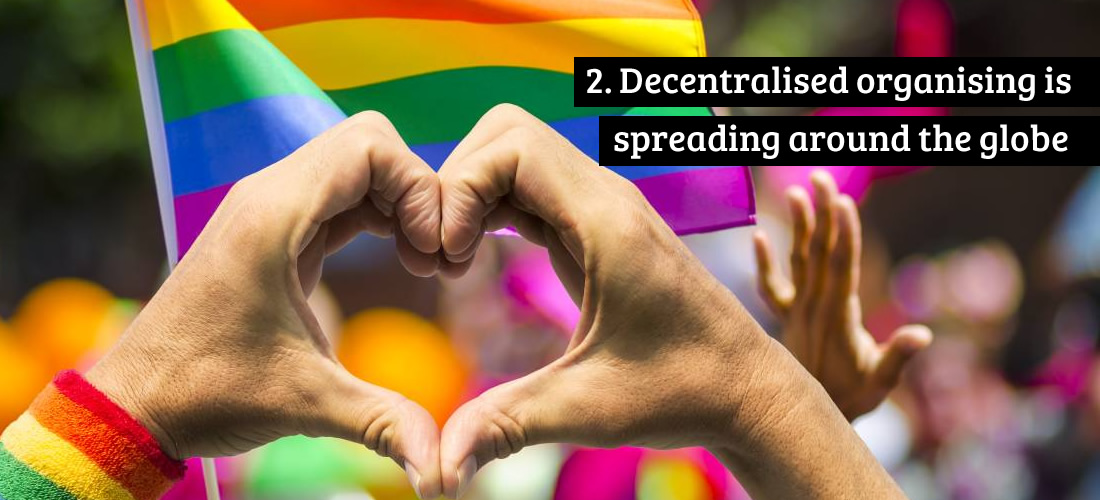
Movements that enable people to organise in distributed ways have been on the rise in the U.S. and we’re increasingly seeing signs of this model in Europe, Asia and parts of Africa. Campaigns and social movements are using digital connectivity to empower new leaders and scale local organising.
South Africa’s #FeesMustFall movement was able to achieve significant success with few resources, no hierarchy and a decentralised self-organising model. The campaign’s results include the ruling party recently announcing free higher education.
Youth in South Africa had been calling for free higher education for over 20 years so that more black students would to be able to attend university. Protests erupted at several universities when the government announced that schools would be allowed to set their own fee increases for 2017.
Students improvised and adapted to the specific context of each university to find a way to shut down campuses. Protests and shutdowns spread from university to university. Students set up barricades and disrupted lectures and normal functions on campus.
The #FeesMustFall movement led to a halt in fee increases and a revision of the education system to accommodate the “missing middle” — black students who do not receive full state subsidy because their parents are considered middle-class. In reality, these students can’t afford to be at university.
While the movement had drawbacks, the success of #FeesMustFall means lessons will likely be shared across the continent. There is a greater awareness of student power to disrupt systems and the importance of tactical innovation in dealing with authorities.
In Australia, the #VoteYes campaign for marriage equality brought together a coalition of thousands of organisations and companies who used GetUp’s decentralised organising platform to make 1 million phone calls and over 300,000 peer-to-peer texting conversations, helping shift the result of Australia’s marriage equality vote.
And in India, AirAlert.in, a project of Jhatkaa.org, allowed thousands of citizens to start their own campaigns to tackle air pollution. The decentralised platform has stopped tree-clearing construction projects, started a ban on open garbage burning and forced the Environment Ministry to scrap controversial plans.
Given the (increasing) limits of Facebook and other social media platforms, and the effects of polarisation on society, many organisations are returning to high touch methods like organising and decentralised campaigning to make direct and personal contact with constituents and allies and bridge divides through deep and empathetic relationship building.
In the U.S., decentralised organising continues to evolve by integrating technology and accelerating the path to action.
IfNotNow is organising young Jews to end US Jewish community support for the occupation of Palestine. They organise small symbolic protests and amplify them using Facebook Live. During the broadcast, they invite viewers to sign up for a campaign call. When people join the call, they learn about IfNotNow, hear from two new volunteers, participate in a small group discussion, and are asked to organise a symbolic action the following week similar to one they saw on Facebook Live.
IfNotNow ran several cycles of small group actions like this last year that led to mass actions with over 1,000 people in Washington, DC and Los Angeles. In 2017, they trained 1,000 people and doubled the number of chapters from 7 to 14. Over 5,000 people participated in an offline action.
Their work demonstrates that small organisations can grow rapidly using technology for mass training and decentralised organising.
3. Cute viral videos fall off Facebook in favour of real engagement

Recent Facebook platform updates dramatically change the way campaigners reach and engage supporters online. The change favours content from personal social networks (e.g. friends and family posts) over pages, including those of NGOs, campaigning organisations, and media outlets.
Yet many people have come to rely on Facebook as a source for updates on social change campaigns and a critical tool for reaching allies and activists. Before the algorithm changed, two-thirds of Americans were getting their news from Facebook and people’s reliance on social media for news may be as high or higher in other parts of the world.
Mark Zuckerberg says Facebook is only good for users’ well being when they connect with people they care about.
This announcement follows a trend we’ve seen the last few years in which it’s become more difficult to reach followers via newsfeeds. Campaign referrals from Facebook have been dropping. For campaigners, Facebook has been a key channel to reach and engage people, and influence or shift public narrative on issues. So what do we do about it?
There are some promising options to continue campaigning within Facebook under the new algorithm.
Facebook Groups have long been sidelined by organisations in favour of Pages. It now seems Groups may more effectively engage allies and supporters. Prioritising Groups supports Facebook’s claim that time with family, friends and groups is time well spent. Facebook made several changes and investments in Groups last year including rolling out new features for Groups — welcome posts, badges for admins/moderators, member profiles and more moderation tools — and their recent algorithm change also prioritized content from groups in the news feed.
There are several successful examples of Facebook groups being used in the past to coordinate lobbying and advertiser boycotts. The Flush Rush campaign used a Facebook group to coordinate a massive volunteer effort to get dozens of companies to pull their advertising from the conservative commentator Rush Limbaugh’s radio show.
Other organisations have used Facebook Groups to distribute content activists can post on their own feeds to recruit their friends and family. Showing Up for Racial Justice recruited a team of over 200 volunteers who posted content designed to shock the moral conscience of white people or welcome white people to act in solidarity with people of color. This helped recruit 10,000 people to events in a week.
We are likely to see more organisations moving towards strategies where staff members, campaigners, volunteers and ambassadors become the face and communicators of an organisation rather than the organisation itself.
Facebook Live could also provide an opportunity to reach new people who want to connect with your work.
Before the algorithm change, Facebook Live notifications were taking over feeds with one in five videos on Facebook being live. While their prominence is likely to slip along with organisational posts, combined with Groups or Ambassador strategies, they will could still hold prominence in the feed and develop deep engagement.
Movimiento Cosecha used Facebook Live during direct actions at part of the Boston ICE shutdown, the #FireBannon campaign, and dozens more actions since the U.S. election. They took Facebook Live beyond a broadcasting tool into an engagement and movement building tool by encouraging people to sign up for a community call later in the week. The calls attracted hundreds of people, supporting some of them to engage in direct action and helped them scale their movement.
Organisations will need to adjust but, in the end, these changes may help strengthen our organisations and movements. Rewarding investment in social media driven by connection and engagement should have a net positive impact.
4. Mobiles overtaking social media for organising and engagement
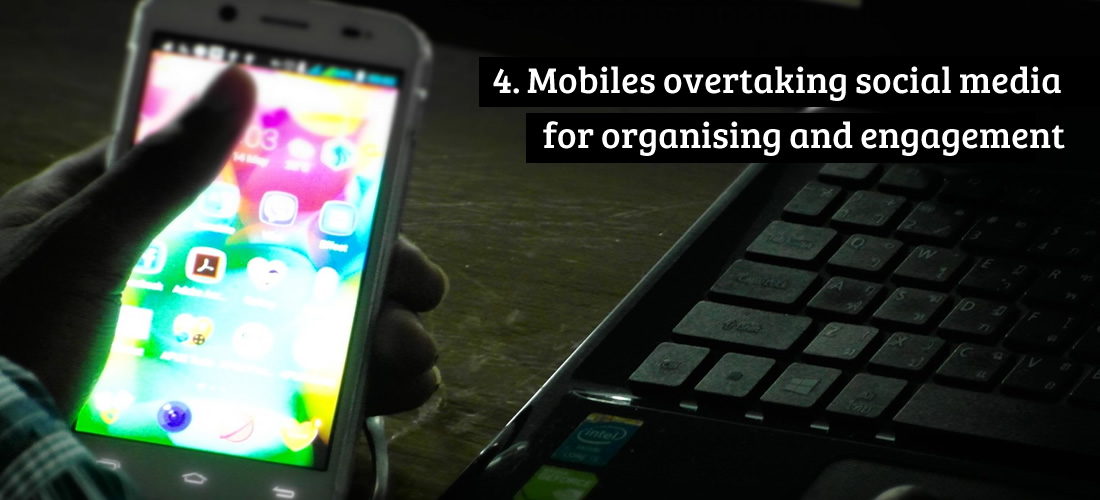
Limited internet access, slow speeds, and low smartphone penetration mean mobile phones have been the go-to tool for campaigners in the Global South for years. Organisations in the Global North, however, are increasingly turning to text to connect with constituents because it offers a seemingly more authentic — and, therefore, effective — means of communication. When you get a text, you’re not just another email address on a huge list.
At the same time, mobile organising in the Global South is shifting towards apps as data and smartphones become more affordable and more people use messaging platforms like WhatsApp. In a global survey by Reuters they found that a quarter of respondents globally share and discuss news using one or more messaging apps, with the biggest growth occurring in Asia and Latin America.
In Ghana, people say they have become wary of text messages because of the amount of spam. Whatsapp, which “seems more personal,” is preferred. This presents its own obstacles. Whatsapp needs data and some users can’t always afford that, or always be in areas where they have an adequate connection. People who use the app for organising also have a tough challenge of avoiding spam in groups that are currently difficult to moderate.
In Zimbabwe, before Mugabe was ousted, Whatsapp was widely used to mobilise among young activists. Using WhatsApp made it more difficult for for the state to track organisers, but didn’t stop the state from trying to restrict its use. All mobile data promotions were suspended during the protests making internet access significantly more expensive, and two days later the government announced cyber-crime legislation that would undermine the use of digital platforms for mobilising.
Movimiento Cosecha is also using WhatsApp to broadcast messages and get opt-ins from Facebook Live broadcasts and at in-person events and actions via text in order to follow up peer to peer. They’re also adapting the traditional Facebook photo post to work on Whatsapp in groups.
Peer-to-peer texting, particularly for developing new leaders and mobilising has become a key tools for organising. School Cuts used peer-to-peer texting in the UK to mobilise parents and teachers as part of a Parliamentary lobby before the government budget was released in November. MoveOn.org believes they have a powerful new channel in their 1,000 volunteer texters who help drive lobbying calls or recruit people to events.
In the U.S., Team Internet — a volunteer-driven organizing project co-led by Free Press, Demand Progress and Fight for the Future — used peer-to-peer texting, phone banking and email to mobilise people in response to threats to net neutrality. Team Internet created an opt-in textable community of approx 400,000 people. They held over 600 meetings with members of Congress or their staff and organised over 700 protests at Verizon mobile stores.
The 2017 Digital News report pointed out that people are spending less time on social networks and more time on messaging applications. The report also predicts that Whatsapp will overtake Facebook on time spent per day by people. There has also been a sharp rise in the use of messaging apps for sharing news, particularly in Asia and Latin America. Mobiles, using text or apps, are cutting through inbox and news feed clutter that bogs down effective peer to peer and group communications.
5. It’s getting harder and riskier to campaign for change
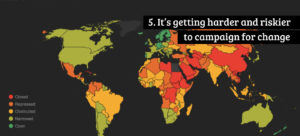
With the rise of authoritarian nationalism, it comes as no surprise that states and companies are increasingly attempting to restrict campaigning space and free speech.
Campaigners and organisers are becoming more sophisticated users of technology. But corporations and states are increasingly using the same technologies – open data, social media, internet connectivity – to attack, discredit or hack organisations and activists. Autocratic states are quickly learning from one another how to use technology, misinformation, and big data to manipulate citizens and shut down dissent.
Last month, online news site Rappler was shut down in the Philippines. Their licence was revoked for taking funding from overseas. Rappler has been critical of Philippines President Rodrigo Duterte and his war on drugs that has resulted in the killing of thousands of suspected drug handlers and users.
In India, threats to democracy have become so severe that four supreme court judges held a press conference last week to call for the preservation of the judiciary. Otherwise, they said, “democracy will not survive in this country, or any country.”
When Facebook arrived in Cambodia, people hoped it would come with an opportunity for free speech and provide a platform to counter government propaganda. Instead, Prime Minister Hun Sen uses the platform to promote his message and uses Facebook’s own rules and a direct relationship with Facebook staff to shut down criticism.
Some countries have brought in new laws in the last year that restrict NGOs – particularly foreign NGOs or ones receiving foreign funding. In China, new laws subject foreign NGOs to close government monitoring, including questioning workers, inspecting offices, reviewing documents. The new law also gives the Chinese government the power to seal premises and seize assets. In Nigeria, an anti-NGO bill cracks down on democratic space. And in Hungary, new laws mean NGOs receiving foreign funding must declare themselves to the government as “supported from abroad”.
Changing laws are just the first step in the crack down. Late last year, Ugandan police forces raided the offices of ActionAid Uganda, the Great Lakes Institute (GLISS), Solidarity Uganda and others. Uganda is among a growing number of countries seeing civic space restricted while human rights activists and the communities they serve are being put at risk.
The courts are also being used to shut down civil protest with meritless corporate SLAPP lawsuitssuch as those by Energy Transfer Partners and Resolute in the U.S. and Canada.
Last week, an activist in Vietnam was sentenced to 14 years in jail for livestreaming a march by fishermen to file a lawsuit against a Taiwan-owned steel plant’s spill of toxins into the ocean.
The list of examples of shrinking civil society spaces continues here and here. It likely also continues in a neighborhood near you.
As the internet is increasingly weaponised and trust in mainstream or traditional news falls, campaigners have an even greater incentive to develop trusted channels for reaching key audiences. That means investing more in face-to-face strategies and the tech platforms and tactics that offer one to one engagement, security and trust.
Authoritarian governments are adept at learning from one another how best to curtail their citizens’ freedoms, but activists increasingly find creative ways to continue their work under the noses of authorities.
In Brazil, civil society organisations have united in resistance against government measures being adopted that take Brazil back decades in terms of environmental protection and human rights. Under the motto “Denounce and resist,” this group of over 100 organisations is creating a coordinated resistance movement with national and regional actions stop the Brazilian government and the ruralista (agribusiness) lobby from violating human rights – especially those of indigenous and agricultural labourers – and jeopardizing environmental protection.
More cross society efforts and cross sector collaborations are needed to protect civil society and create an interconnected ecosystem of grassroots movements. We’d love to hear your thoughts on what we need to create and grow those solutions.
6. Polarised societies are making it harder to create change
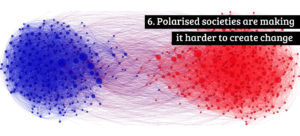
Polarisation and right-wing populism threatens the mission of progressive campaigners and NGOs. Organisations are struggling to to respond. But there are a few examples of campaigns that have bridged social divides. By making deeper connections among people, we can begin to heal the rift in our polarised societies.
The U.S. marriage equality campaign is perhaps the most prominent example of engaging people across the political spectrum, including conservative politicians and big corporations.
Early campaign communications focused on winning legal rights for same sex couples. But that’s not how most Americans think about marriage. Freedom to Marry talked to people who were truly conflicted about the issue — people who believed gay couples should have some rights but weren’t comfortable with the idea of gay couples marrying. Their research revealed an opportunity to unite people across the political divide by talking about love and commitment as the basis for marriage. They spoke to values that conflicted voters could relate to, empathise with, and agree on.
Campaigners fighting to save Poland’s Bialowieza forest faced rising nationalism and a government that ignored normal channels for democratic dialogue and decision making. In this climate of a polarised Poland, the Bialowieza Forest campaign want to create broad support by forming a ‘strategic and selective’ coalition.
The coalition was carefully chosen to be able to work together and from NGO’s working closely on related issues. It was run under the ‘I love Bialowieza/Puszcza Forest’ logo rather than any NGO identities. Even when the campaign gained momentum, they decided not to broaden the coalition. This was partly because they didn’t want to introduce new dynamics to working in coalition, and also because they didn’t want to identify the campaign with wider social issues which could politicise it. The aim was always to keep as many conservative supporters on board as possible.
Campaigners took care not to be ‘anti-government.’ In particular, they didn’t want to be seen to be attacking the ruling Law and Justice party (PiS) who have an outright majority in parliament and whose popularity is growing. All involved also tried hard not to associate the campaign with any single opposition party.
For much of the campaign these approaches worked and helped generate supportive articles in the conservative press. Campaigners won support from UNESCO. They then got the European Commission to put the case to the European Court of Justice, who imposed a temporary ban on logging activities. The campaigners have submitted evidence to show that the court order is being ignored. The next stage is a decision about whether the interim logging ban will be upheld and financial penalties imposed.
Frankly, we’re short on successful examples of campaigns that unite people across the political divide and this shows how much work we have to do this year to understand how to break down the barriers in our increasingly polarised societies.
That is just what New York City-based Beespace intends to do starting this year.
Beespace will pivot from its initial model incubating nonprofit startups and launch an Idea Lab to explore polarisation and ways to tackle its roots. The Idea Lab brings together diverse teams to run experiments focusing on human behavior and our deepest values as well as systems that maintain and accelerate divisiveness. They don’t expect to “solve” polarisation but they do intend to learn more about what creates social change innovation.
Meanwhile, some issues are popular across the political divide. For example, concern about plastic waste is driving a worldwide popular movement. Both large international and small local organisations working together to tackle eliminate or at least drastically reduce plastic waste. More than 15 countries in Africa have either banned plastic bags or imposed taxes on them. Several countries in Asia and Europe have taken action, as have some U.S. states. Politicians across the political spectrum have pledged action to eliminate plastic waste. The list of leading brands and packaging companies working towards 100% reusable or compostable packaging is growing.
The increase in polarisation is hurting efforts to create positive change in a dynamic and interconnected world. In many cases it is a direct attack on our vision for the future and it is all too easy to exacerbate the divisions in society by blaming the people who voted for divisive politicians or policies.
We campaign in a constantly changing landscape and that means that sometimes we must be willing to question our entire approach to change — pivoting the way we work, who we work with, or where we choose to make change in society — not just trying a new strategy, tactic or tool as outlined in the previous trends, but test an entirely new model.
Trump will continue to dominate the global news cycle. But Trump’s presence also motivates people to action and drives the emergence of non-traditional campaigning organisations. Look for innovative campaigning and organising in the lead up to November’s U.S. midterm elections.
Keeping Campaigning Fresh is the result of feedback and input from dozens of campaigners and progressive change leaders around the world. Thank you to the CampaignCon community and MobLab network for your ideas.
We also want to note the generosity of the following people who shared their time to provide comments and edits on drafts of this brief, including: Adam Levine, Alessandro Saccoccio, Anirban Chakrabarti, Anna Galland, Araceli Segura, Avinash Kumar, Ayeisha Thomas-Smith, Beth Kanter, Betsy Hoover, Daniel Valls, Daniela Demarchi, Daniela Pichler, Darren Barefoot, Hahrie Han, Han Hui Hui, Hans Peter Schmitz, Jay Carmona, Jesse Littlewood, Julie Szabo, Kristen Grimm, Luke Walter, Lysa John, Matt Browner Hamlin, Matt Daggett, Michael Poland, Michael Snook, Mrinalini Dayal, Nick Mokobane, Nicole Carty, Robin Oakley, Nina Hall, Rachael Mayo, Randall Smith, Ryan Schlief, Soenke Lorenzen, Thaís Marques, Tim Norton and Yonah Lieberman.
